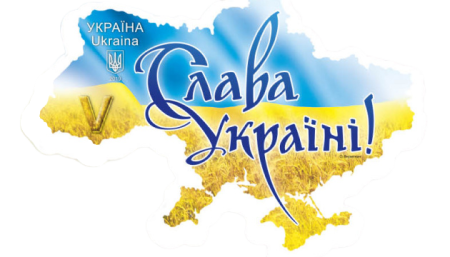Вплив методів аналгезії та седації на частоту розвитку посттравматичної стресорної реакції у хірургічних хворих, які перебували на лікуванні у відділенні інтенсивної терапії
DOI:
https://doi.org/10.25284/2519-2078.2(59).2012.108033Ключові слова:
посттравматична стресорная реакція, аналгезія, безсоння, опитувальник Спілбергера-ХанінаАнотація
Мета дослідження - порівняти вплив методів аналгезії та седації на частоту розвитку посттравматичної стресорної реакції у хірургічних хворих у відділенні інтенсивної терапії. У дослідження було включено 172 хворих, які дали згоду пройти тестування за шкалою особистої та реактивної тривожності Спілбергера-Ханіна. Визначено, що у хворих з неадекватною аналгезією та порушенням нічного сну, яке не коригується, вірогідність розвитку посттравматичної стресорної реакції втричі вища порівняно з хворими, які отримували сон-коригуючу терапію під час аналгезії та седації у відділенні інтенсивної терапії. Це стосується як найближчого періоду після переводу з відділенні інтенсивної терапії, так і віддаленого (через 6 міс після виписки зі стаціонару).Посилання
McFarlane А.С. (2000) Posttraumatic stress disorder: a model of the longitudinal course and the role of risk factors. J Clin Psychiatry, 61 (suppl 5): 15-20.
Michaels A.J., Michaels C.E., Zimmerman A.E. (1999) Posttraumatic stress disorder in injured adults: etiology by path analysis. J .Trauma, 47: 867-873. https://doi.org/10.1097/00005373-199911000-00009
Jones C., Griffiths R.D., Humphris G. (2001) Memory, delusions, and the development of acute posttraumatic stress disorder-related symptoms after intensive care. Grit Care Med, 29: 573-580. https://doi.org/10.1097/00003246-200103000-00019
Schelling G., Briegel J., Roozendaal B. (2001) The effect of stress doses of hydrocortisone during septic shock on posttraumatic stress disorder in survivors. Biol Psychiatry, 50: 978-985. https://doi.org/10.1016/s0006-3223(01)01270-7
Schelling G. (2002) Effects of stress hormones on traumatic memory formation and the development of posttraumatic stress disorder in critically ill patients. Neurobiol Learn Mem, 78: 596-609. https://doi.org/10.1006/nlme.2002.4083
Smith M.Y., Redd W.H., Peyser C., Vogl D. (1999) Post-traumatic stress disorder in cancer: a review. Psychooncology, 8: 521-537. https://doi.org/10.1002/(sici)1099-1611(199911/12)8:63.0.co;2-x
Shemesh E., Koren-Michowitz M., Yehuda R., Milo-Cotter 0. (2006) Symptoms of posttraumatic stress disorder in patients who have had a myocardial infarction. Psychosomatics, 47: 231-239. https://doi.org/10.1176/appi.psy.47.3.231
Myhren H., Ekeberg Ø., Tøien K, Karlsson S., Stokland 0. (2010) Posttraumatic stress, anxiety and depression symptoms in patients during the first year post intensive care unit discharge. Crit. Care, 14: R14. https://doi.org/10.1186/cc8870
Myhren H., Tøien K., Ekeberg 0., Karlsson S. (2009) Patients’ memory and psychological distress after ICU stay compared with expectations of the relatives. Intens. Care Med, 35: 2078-2086. https://doi.org/10.1007/s00134-009-1614-1
Horowitz M.J. Wilner N.. Kaltreider N. Signs and symptoms of posttraumatic stress disorder (1980) Arch Gen Psychiat, 37: 85-92. https://doi.org/10.1001/archpsyc.1980.01780140087010
Nelson B.J., Weinert C.R., Bury C.L. (2000) Intensive care unit drug use and subsequent quality of life in acute lung injury patients. Crit Care Med, 28: 3626-3630. https://doi.org/10.1097/00003246-200011000-00013
de Ouervain D.J., Roozendaal B., Nitsch R.M. (2001) Acute cortisone administration impairs retrieval of long-term declarative memory in humans. Nat Neurosci, 3: 313-314. https://doi.org/10.1038/73873
Roozendaal B., Ouirarte G.L., McGaugh J.L. (1997) Stress-activated hormonal systems and the regulation of memory storage. Ann N Y Acad Sci, 821: 247-258. https://doi.org/10.1111/j.1749-6632.1997.tb48284.x
Richter J.C., Waydhas C., Pajonk Fr. (2006) Incidence of posttraumatic stress disorder after prolonged surgical intensive care unit treatment. Psychosomatics, 47: 223-230. https://doi.org/10.1176/appi.psy.47.3.223
Breslau N., Davis G.C., Andreski P, Peterson E.L. (1997) Sex differences in posttraumatic stress disorder. Archives of General Psychiatry, 54: 1044-8. https://doi.org/10.1001/archpsyc.1997.01830230082012
Scragg P, Jones A., Fauvel N. (2001) Psychological problems following ICU treatment. Anaesthesia, 56: 9-14. https://doi.org/10.1046/j.1365-2044.2001.01714.x
Parthasarathy S., Tobin M.J. (2002) Effect of ventilator mode on sleep quality in critically ill patients. Am. J. Respir. Crit. Care Med, 166: 1423-1429. https://doi.org/10.1164/rccm.200209-999oc
##submission.downloads##
Опубліковано
Як цитувати
Номер
Розділ
Ліцензія
Авторське право (c) 2012 l. l. Лісний, В. l. Черній, Н. П. Літвінчук, К. Ю. Бєлка

Ця робота ліцензується відповідно до Creative Commons Attribution-NonCommercial 4.0 International License.
Автори, які публікуються у цьому журналі, погоджуються з наступними умовами:
a. Автори залишають за собою право на авторство своєї роботи та передають журналу право першої публікації цієї роботи на умовах ліцензії Creative Commons Attribution-NonCommercial 4.0 International License, котра дозволяє іншим особам вільно розповсюджувати опубліковану роботу з обов'язковим посиланням на авторів оригінальної роботи та першу публікацію роботи у цьому журналі.
b. Автори мають право укладати самостійні додаткові угоди щодо неексклюзивного розповсюдження роботи у тому вигляді, в якому вона була опублікована цим журналом (наприклад, розміщувати роботу в електронному сховищі установи або публікувати у складі монографії), за умови збереження посилання на першу публікацію роботи у цьому журналі.
c. Політика журналу дозволяє і заохочує розміщення авторами в мережі Інтернет (наприклад, у сховищах установ або на особистих веб-сайтах) рукопису роботи, як до подання цього рукопису до редакції, так і під час його редакційного опрацювання, оскільки це сприяє виникненню продуктивної наукової дискусії та позитивно позначається на оперативності та динаміці цитування опублікованої роботи (див. The Effect of Open Access).








